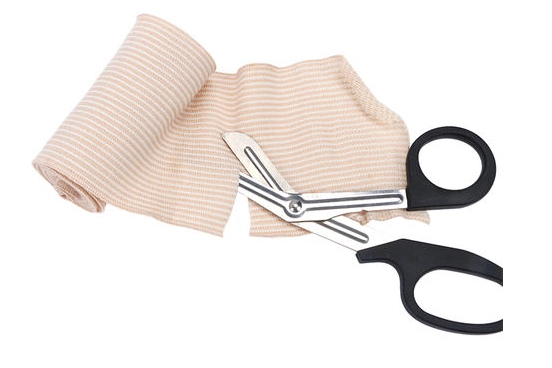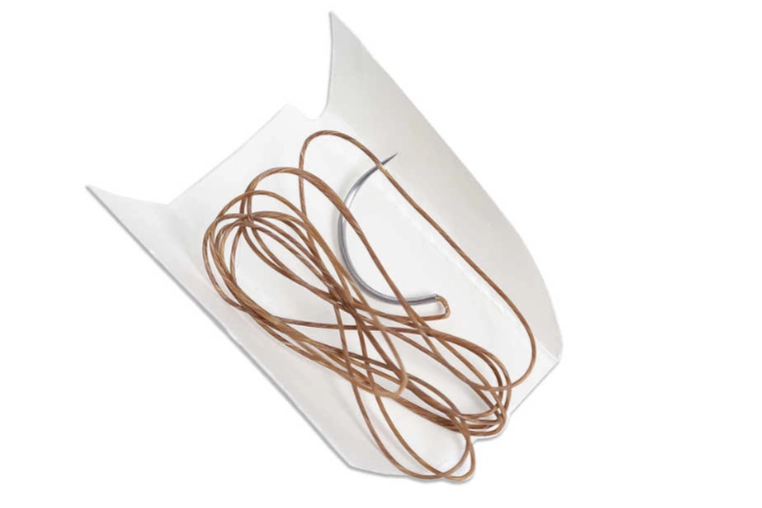
Types of Cuts and Appropriate Bandages
| Type of Cut | Recommended Bandage Type |
| Minor Cuts and Abrasions | Adhesive bandages or First Aid Wound Plasters |
| Moderate Cuts and Lacerations | Sterile gauze pads with adhesive tape or cohesive bandages |
| Severe Cuts and Deep Wounds | Compression bandages with absorbent pads |
Minor Cuts and Abrasions
Superficial cuts and scratches along with minor abrasions will usually heal without much action needed to prevent infection. Use adhesive bandages or First Aid Wound Plasters to cover these injuries, as they provide some protection without too much restriction. They can be applied, removed, and replaced easily when necessary alypperz1.
Moderate Cuts and Lacerations
Moderate cuts involve deeper tissue damage that may require more substantial protection. Sterile gauze pads secured with adhesive tape or cohesive bandages offer excellent coverage while allowing the wound to breathe. These options help absorb exudate while preventing contamination.
Severe Cuts and Deep Wounds
Severe cuts necessitate immediate medical attention due to their depth and potential for significant blood loss. Compression bandages combined with absorbent pads are recommended to control bleeding while providing cushioning support. These specialized dressings facilitate clotting by applying consistent pressure.
Specialized Bandages for Specific Needs
Different environments demand unique solutions; specialized bandages cater to specific needs such as moisture resistance or antibacterial properties.
Waterproof Bandages for Moist Environments
Waterproof bandages are designed to protect wounds in wet conditions without compromising adhesion or breathability.
Key Features and Benefits
These comprise modern repellent chemicals with flexibility features. These are impermeable to moisture while swimming or taking a shower, therefore the edge of the infection is not broken. They are breathable, letting air pass underneath the dressing and helping to reduce wound drying while ensuring wounds remain adequately ventilated to enhance healing times.
Antibacterial Bandages for High-Risk Areas
Antibacterial bandages incorporate antimicrobial agents into their construction—offering enhanced protection against pathogens commonly found in high-risk areas prone to infection.
Protective Properties
These new dressings will slowly give off antimicrobial agents that will make the area around a wound (which is often in a high-contact area like hands and feet) hostile to bacterial growth. They significantly lower bacteria colonization rates compared to standard options, and they minimize complications from slowly healing wounds, such as cellulitis or abscesses. Fillers place the bacterial colonization rates more than 90% below the Standard of Care options they also reduce complications from slow-healing wounds (cellulitis or abscesses formation).
In summary, depending on how deep each wound is, even both types of bandages for cuts or the types of bandages are available to ensure proper care focused on tailored conditions and efficient recovery while protecting from potential risks associated with improper usage choices!
How to Properly Apply and Maintain Bandages
Proper application and maintenance of bandages are essential for ensuring effective wound protection and healing. Following the correct procedures can significantly enhance the performance of bandages, leading to improved outcomes.
Steps for Effective Application
Preparation Techniques
Start by cleaning the wound using mild soap and water or an antiseptic solution, this will help remove any particles or germs present. Dry the area with a clean cloth, do not allow moisture to collect beneath the gauze it will help bacteria grow.
Then, select an appropriate type of bandage based on the severity of the cut discussed in earlier sections. A tip for applying make sure you have washed your hands or wear gloves so you do not contaminate the wound when applying. Place the bandage over the wound without tension so there is no risk of cutting off circulation.
Maintenance Tips for Longevity and Effectiveness
Regular Monitoring Practices
After placing the bandage on your skin, check it every so often for wear or contamination. Look for peeling edges of adhesive, dirt, and moisture collection. For ideal protection, replace it if it gets wet or dirty, or stops sticking. Reapply the bandage when it gets wet, dirty, or no longer sticks in a way to stays the most secure possible.
Check the wound during each bandage change for any signs of infection, including redness, swelling, and discharge. Notify your doctor as soon as possible if any adverse signs emerge. The important thing is to keep the environment around the wound clean and dry to prevent complications and facilitate healing. The prevention of proper wound care complications and healing will go a long way toward ensuring an environment that is clean and dry around the wound.
Exploring Medco’s Range of Medical Products

At Medco, you can find a variety of medical products that can serve different healthcare needs. They offer cutting-edge technologies that promote optimal healing comfortably and safely—innovations in wound healing care. This innovation in wound recovery allows for more advanced healing procedures while always maintaining the utmost patient comfort and safety.
Innovative Solutions in Wound Care
Medco’s Advanced Bandage Technologies
Medco’s advanced bandage technologies are designed with specialized materials and features, which address specific wound care needs. Such textiles consist of breathable materials for better airflow, moisture-wicking layers that keep the wounds dry, and antimicrobial agents that lower the chances of infection. This includes using breathable textiles to allow air to get to the skin, moisture-wicking components to keep wounds dry as well and antimicrobial representatives that minimize the threat of contamination.
Their range includes specialized options such as waterproof and antibacterial bandages tailored for specific environments or high-risk areas. These products ensure comprehensive protection while facilitating faster recovery times through superior design features.
Additional Offerings by Medco
Comprehensive Medical Device Portfolio
Medco’s portfolio extends beyond wound care solutions, offering a diverse array of medical devices across a multitude of healthcare applications. They include diagnostic equipment, surgical tools, patient monitoring, etc- showing dependable working in various areas of healthcare. Their portfolio ranges from diagnostic equipment and surgical instruments to patient monitoring and beyond—providing consistent reliability across various clinical environments.
Medco’s commitment to quality ensures that its products adhere strictly to industry standards while incorporating innovative features aimed at improving patient outcomes efficiently.
To summarize, knowing how to choose suitable bandages for cuts depending on the defined severity of the injury is crucial when it comes to effective treatment results. When applied correctly using appropriate solutions from reputable providers such as Medco – healthcare professionals can simplify the patient care processes without major risks of issues arising due to misuse options!




